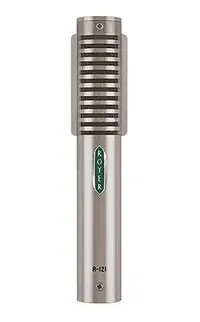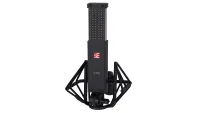MusicRadar Verdict
Fen-tone combines classic design with a modern twist to create a highly desirable ribbon mic. It’s certainly not cheap, but is a quality package and offers good value.
Pros
- +
Compact nearfield ribbon design.
- +
Active and passive operation.
- +
Premium components.
- +
Attractive design.
- +
Good value.
Cons
- -
No low-cut options.
MusicRadar's got your back
What is it?
Ribbon mics have a reputation for being fragile and having low output, and unfortunately this often deters potential users. But they are excellent at capturing complex sounds and in a controlled studio environment are a highly desirable recording tool.
Available in single and matched pairs, Fen-tone from retro gear maestro Warm Audio, is a contemporary side address figure 8 ribbon mic inspired by Bang and Olufsen’s classic BM3 and BM4 mics. But despite the visual similarity, Fen-tone ups the offering considerably, with both passive and active modes. The latter employs an on-board phantom powered JFET line lifter based on their standalone Warm Lifter preamp, and is enabled using an on-body switch. This provides 26dB of boost, making Fen-tone better compatible with a wide range of mic pres and interfaces. Meanwhile the passive option delivers a more retro experience for those with a suitable low noise high gain mic pre.
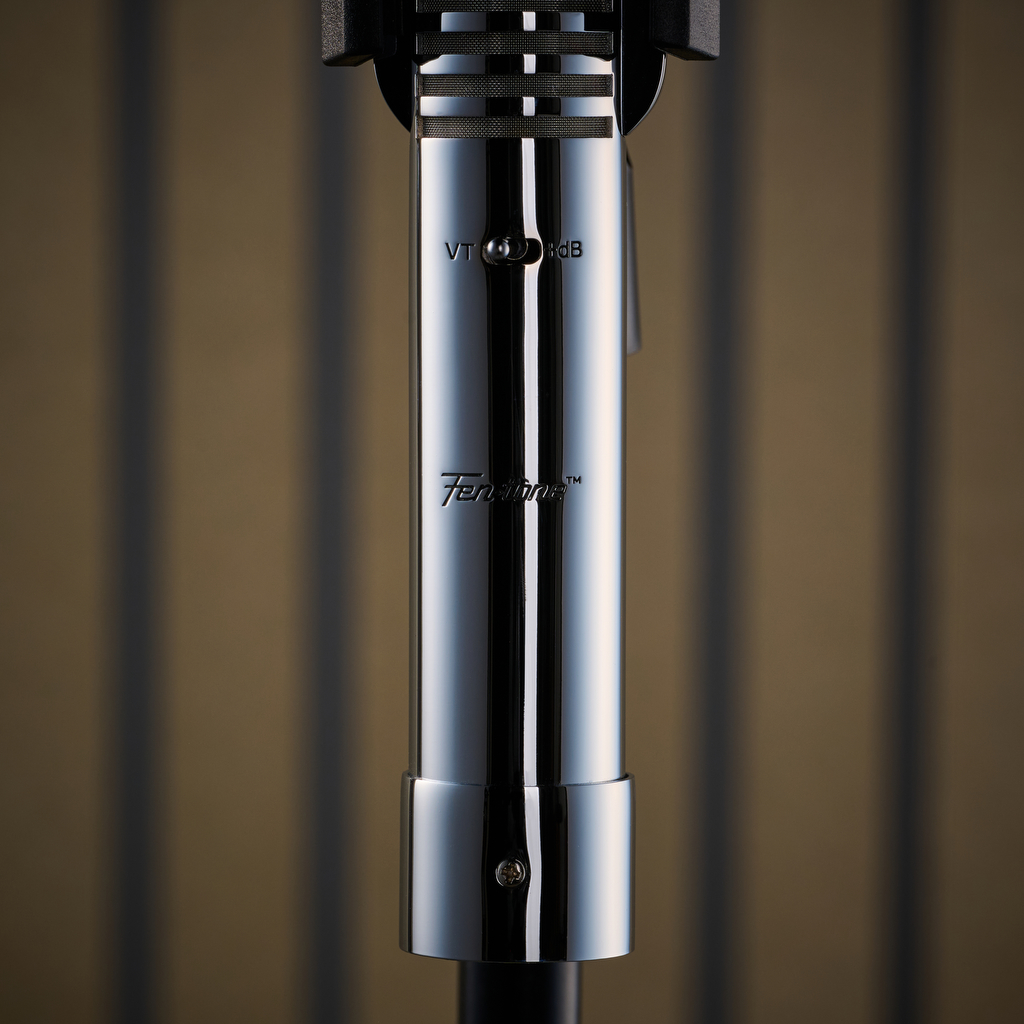
In construction terms, Fen-tone uses a raft of high-quality components including a custom Japanese ribbon, rare earth Neodymium magnet and CineMag USA output transformer. The whole mic is housed in a mirror finish compact pencil style housing and comes with a molded compact flight case. Further accessories include a mic sock, mic clip and polishing cloth.
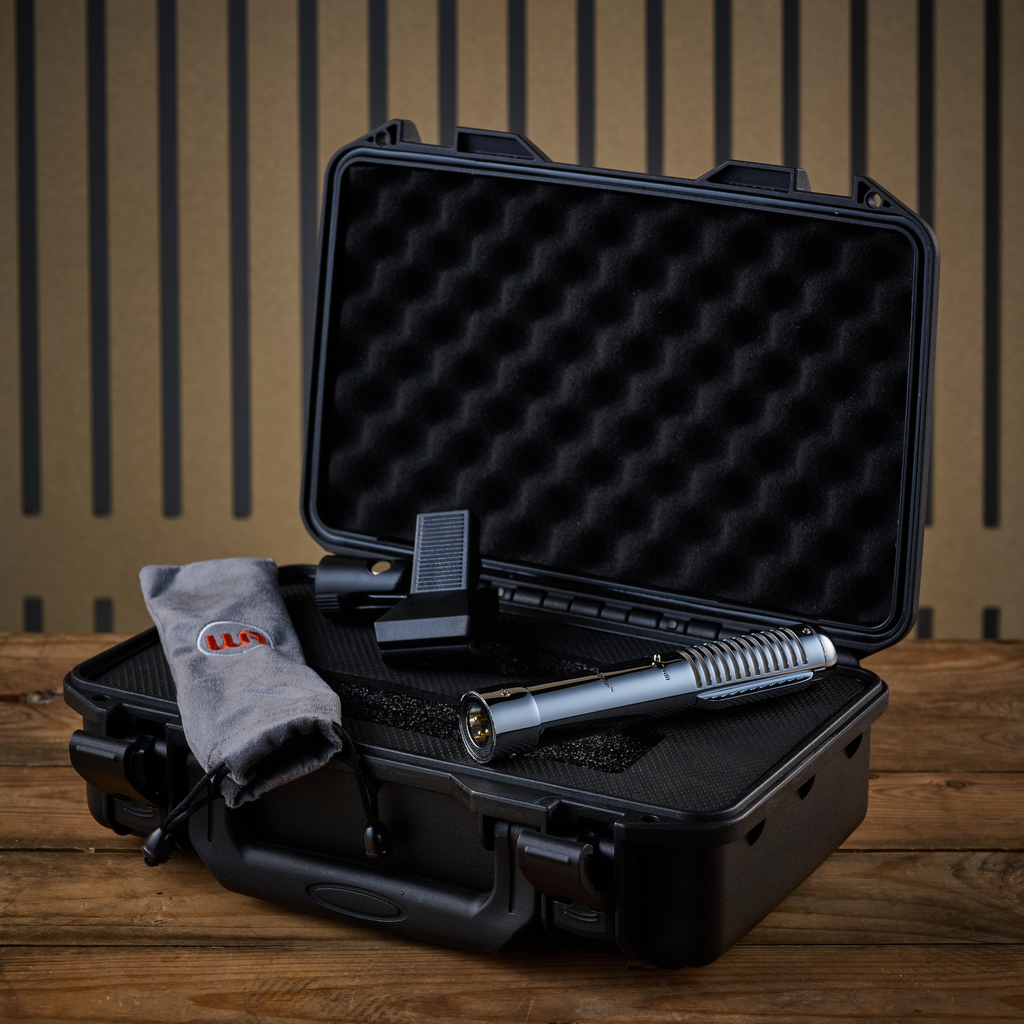
Performance
Fen-tone is unquestionably a beautifully made mic, and with final testing and quality inspection at Warm’s Austin HQ, plus a five-year warranty, the £599 price tag seems reasonable.
The mic is quite compact and at around 300g is light enough for a regular boom stand, which can only be a good thing. There’s no cradle, but the included clamp-style clip does the job and facilitates easy setup. The visible motor ‘wings’ design also provides handy visual feedback when orientating the mic’s figure 8 pattern.
Although the temptation is to position the mic with the logo towards the source, Warm Audio is keen to emphasise that the Fen-tone has no dark or bright side, so you can use whichever side is more convenient.
We started testing with the line lifter active. This delivers a very healthy output level, and higher than you’d get from a typical phantom-powered condenser. As you might expect, it’s unwise to hot plug the mic with the phantom active, and for safety it’s also best to switch off phantom power when using the passive mode.
Want all the hottest music and gear news, reviews, deals, features and more, direct to your inbox? Sign up here.
For comparison, in passive mode the output level is much lower, but not as low as many ribbon mics we’ve tried. Indeed, we think most modern preamps and interfaces should have enough gain to work in passive mode for many sources.

From a sonic perspective, the Fen-tone is everything that you would expect from this type of ribbon mic, delivering a smooth sound with gentle high frequency roll off. It also has impressive side rejection and as mentioned both on axis sides sound identical.
In keeping with other mics of this style, it’s great for nearfield use and with a high quoted maximum SPL is perfect for close miking guitar amps, bass cabs, or brass instruments, as long as you shield any direct wind.
The mic does exhibit some low-frequency proximity, and we found this very useful for getting ballsy electric guitars and punchy acoustic guitars. That said, it has no on integrated low-cut filters, which would add further low-frequency tailoring.
We tested the mic on different sources in both passive and active modes with the same mic preamp, and although the sound is close, there are some subtle differences. On electric guitar for example, the mid range sounded more forward and slightly brighter overall in active mode. Even so, the differences are subtle and have little bearing on the core voicing of the mic.
Finally, as you would expect from a ribbon design, you can EQ the recordings very successfully, so if you need to reduce the proximity or add some sheen before recording or at the mix stage, this should sound very natural and smooth.
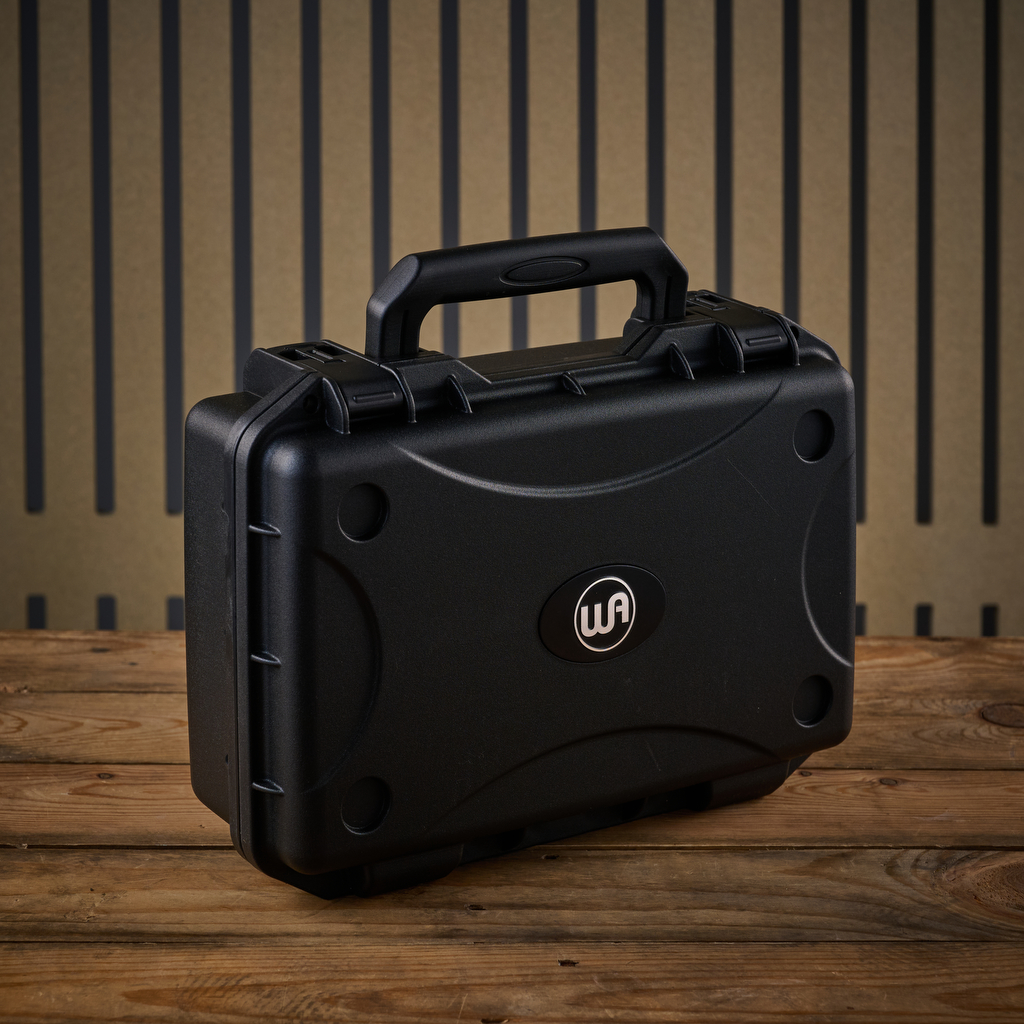
Verdict
Fen-tone’s passive/active design might seem a little unnecessary, but the upshot is a highly flexible mic with an excellent overall delivery. What’s more, it’s also beautifully made and finished. Top marks.
Hands-on demos
Warm Audio

Alternatives
Royer’s classic is an excellent and highly regarded pencil style ribbon mic.
Read more about Royer R-121
A compact and affordable ribbon mic with phantom-powered active circuitry.
Read the full SE Electronics VR2 Voodoo review
Specifications
Price | £599 |
Key features | Type: Dynamic Ribbon: 1.8 micron Magnet: Rare earth Neodymium Design: passive or active with in-line phantom powered 26dB line level lifter Pickup pattern: Figure 8 Sensitivity: 4.47mV/Pa (passive), 89.13 mV/Pa (active) Output: Custom CineMag USA transformer Output impedance: 300 Ohms (passive), 150 Ohms (active) Max. SPL: 148 dB (1kHz ≤ 1% THD) Frequency response: 30Hz to 15kHz (+/-3dB) Signal/noise ratio: 87dB |
Dimensions | 38(d) x 170(h) mm |
Weight | 304g |
Accessories
| Heavy-duty flight case, mic clip, protective mic sock, microfibre cleaning cloth |
Contact |
Jon is a London based platinum award winning mixer, producer, composer and club remixer with a diverse CV that spans dance, pop, rock and music for media. He’s also a long term contributor to MusicRadar's music technology tutorials and reviews. Whether working alone or collaborating he usually handles final mixdowns, so you’ll also find MusicRadar peppered with his handy mixing tips.
You must confirm your public display name before commenting
Please logout and then login again, you will then be prompted to enter your display name.

